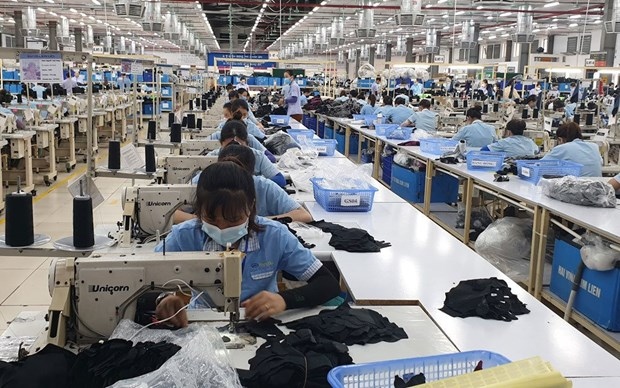Vietnamese exporters, authorities seek to navigate low global demand
Several measures have been recommended to help Vietnamese exporters cope with dwindling demand in many markets around the world.
In the first half of 2022, countries took bold steps to resume economic and tourism activities after the COVID-19 pandemic was controlled, leading to a surge in consumption demand. Thanks to that, Vietnam recorded US$187.2 billion in export revenue during the period, up 18% from a year earlier, statistics showed.
Since the third quarter of 2022, inflation has soared and even peaked in such key markets as the US and the EU compared to many previous years. Meanwhile, unimproved incomes and high unemployment rates have resulted in a sharp fall in consumption demand, especially for non-essential goods that are among Vietnam’s key exports.
In 2023, though counter-measures against inflation have been taken for a certain period of time in many countries, inflation is still high and their economies have faced risks of recession.
Besides, China’s post-pandemic reopening has also created a big source of supply, causing a strong competition pressure on Vietnamese goods because the two countries’ export structures are relatively similar.
Complex developments of the Russia - Ukraine conflict have also prolonged disrruptions to global supply chains, which have kept input material prices high.
All these problems have caused order shortages, forcing many exporters to reduce or even halt production.
Tran Thanh Hai, Deputy Director of the Foreign Trade Agency under the Ministry of Industry and Trade, said that export was highly vibrant and posted double-digit growth rates in 2021 and 2022. However, growth has slowed down this year due to inflation, recession, and lower purchasing power in many traditional markets.
According to the General Department of Vietnam Customs, foreign trade totalled US$316 billion in the first six months of 2023.
In June alone, exports were estimated at US$29.3 billion, rising 4.5% month on month. This was the second consecutive month overseas shipments had increased after a long decline thanks to bolstered trade promotion activities. However, the June revenue still dropped 11.4% year on year.
The six-month export value decreased 12.1% from the same period last year to US$164.45 billion. Analysts pointed out that difficulties may linger on through the end of 2023, even until 2024.
Therefore, enterprises should organise production activities flexibly, strive to fulfill small and difficult orders, make in-depth investment instead of focusing on expansion programmes.
As global consumers are still concerned about economic prospects, enterprises need to keep a close watch on market developments to flexibly and appropriately respond to any changes, and cut unnecessary expenses, analysts said.
On the other hand, authorities should avoid issuing regulations and policies that many add difficulties to businesses, they noted.
Vietnam targets US$393-394 billion in export revenue and 6% in year-on-year export growth for 2023.
To that end, Minister of Industry and Trade Nguyen Hong Dien stated that aside from tapping into new markets, the ministry will continue capitalising on free trade agreements (FTAs).
It will step up digital transformation in the grating of certificates of origin to help firms make use of the FTAs; facilitate logistics services to reduce costs and improve Vietnamese goods’ competitiveness; and boost foreign trade via cross-border e-commerce.
In particular, it will hold monthly meetings between its agencies, Vietnamese trade offices abroad and localities, associations, businesses, and related ministries and sectors to update firms and associations about marke-related information so as to fuel overseas shipments, according to Dien.

